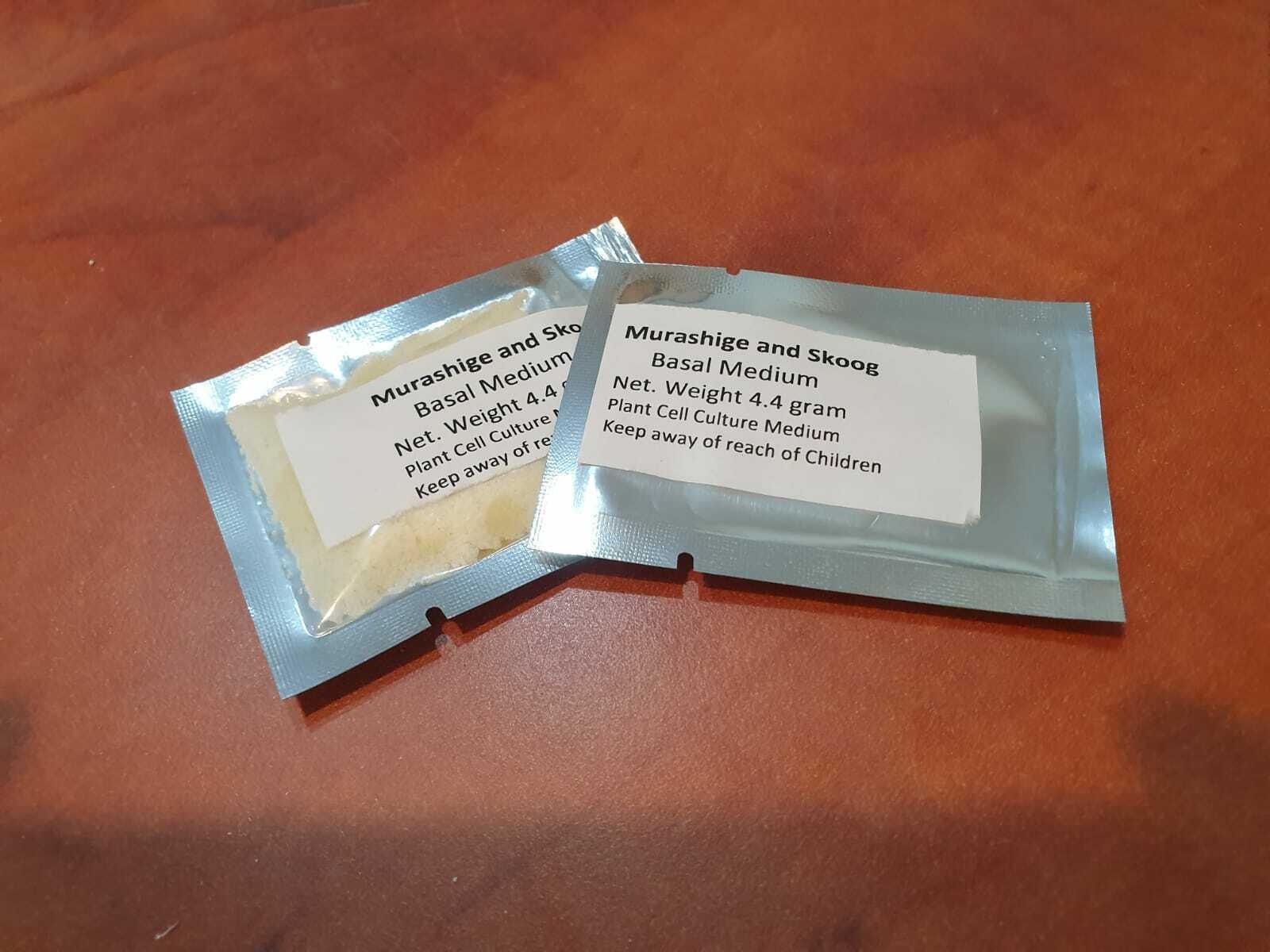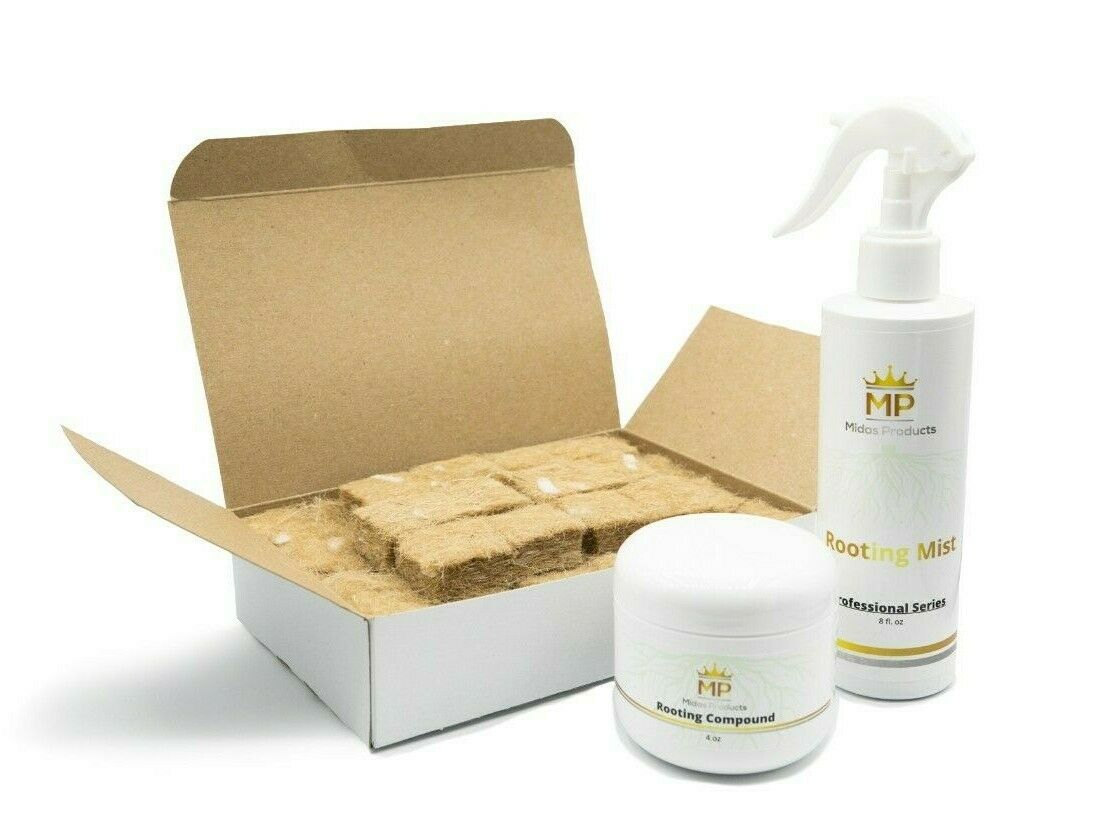-40%
Murashige & Skoog {1962 } Basal Medium includes Vitamins. Dehydrated powder 1L
$ 3.11
- Description
- Size Guide
Description
Murashige & Skoog {1962) Basal Medium. includes VitaminsDehydrated powder for preparation of MS solution. In Small bag for low shipment cost
doesn't
contain Sugar no Liquid. 1 bag contain 4.4 grams ready for preparation of 1L M&S medium .
High Quality ingredients.
Murashige and Skoog medium is a widely used plant tissue culture growth medium.
M&S Basal Medium contains:
Micro Elements
mg/l
µM
CoCl
2
.6H
2
O
0.025
0.11
CuSO
4
.5H
2
O
0.025
0.10
FeNaEDTA
36.70
100.00
H
3
BO
3
6.20
100.27
KI
0.83
5.00
MnSO
4
.H
2
O
16.90
100.00
Na
2
MoO
4
.2H
2
O
0.25
1.03
ZnSO
4
.7H
2
O
8.60
29.91
Macro Elements
mg/l
mM
CaCl
2
332.02
2.99
KH
2
PO
4
170.00
1.25
KNO
3
1900.00
18.79
MgSO
4
180.54
1.50
NH
4
NO
3
1650.00
20.61
Vitamins
mg/l
µM
Glycine
2.00
26.64
myo-Inositol
100.00
554.94
Nicotinic acid
0.50
4.06
Pyridoxine HCl
0.50
2.43
Thiamine HCl
0.10
0.30
Total concentration Micro and Macro elements including vitamins: 4405.19 mg/l
Hazard statements
H315
Causes skin irritation
H319
Causes serious eye irritation
H335
May cause respiratory irritation
Precautionary statements
P261
Avoid breathing dust/fume/gas/mist/vapours/spray
P302
IF ON SKIN:
P305
IF IN EYES:
P351
Rinse continuously with water for several minutes
P352
Wash with soap and water
Dehydrated powder premix for the preparation of a liquid medium, designed for in vitro plant tissue culture.
This medium has originally been developed for callus cultures of Nicotiana tabacum.
Nowadays it is a popular standard-medium for a wide variety of in vitrotechniques, suitable for a great number of plant species.
The formulation (Tab. 1) contains macro- and microelements, vitamins and glycin as described by Murashige & Skoog (1962).
Storage The mixture contains strong hygroscopic ingredients, a storage under dry conditions is necessary.
Optimal storage temperature is between 2 – 8 °C.
Dosage Typical: 4.41 g/l The dosage can be reduced, as this medium is very rich in nutrients, and some plant species have a lower demand or sensitivity against high nutrient concentrations.
As an alternative, Modifications of this formulation can be used, where nutrient salts are reduced, but essential organic components like vitamins are not reduced.
Preparation example
1. Dissolve powder in distilled water
2. Add further substances if needed (additives, carbon sources, auxins/cytokinins or other plant growth regulators)*
3. Adjust the pH using potassium hydroxide (KOH) / sodium hydroxide (NaOH) or hydrochloric acid (HCl)
4. If necessary, add gelling agent to obtain a solid media
5. Autoclave at 121 °C, 15 PSI *
After preparation the powder should be dissolved in water without unnecessary time delay.
The photos is of my tissue culture propagation as a hobbies . I believe that with some studying tissue culture can be done at home . it require trials and errors but with time the presents of success is growing
Good Luck
















